- 翰林提供学术活动、国际课程、科研项目一站式留学背景提升服务!
- 400 888 0080
IB DP Maths: AA SL复习笔记5.4.4 Further Applications of Integration
Negative Integrals
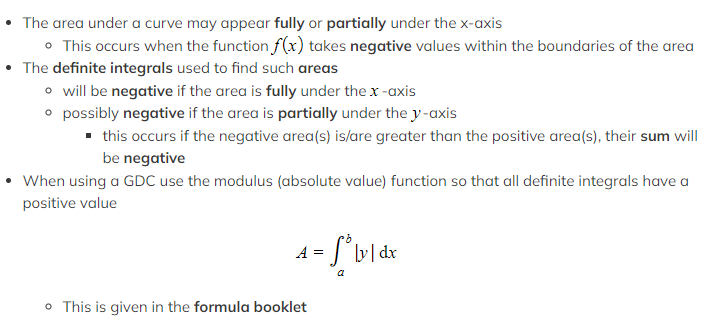 How do I find the area under a curve when the curve is fully under the x-axis?
How do I find the area under a curve when the curve is fully under the x-axis?
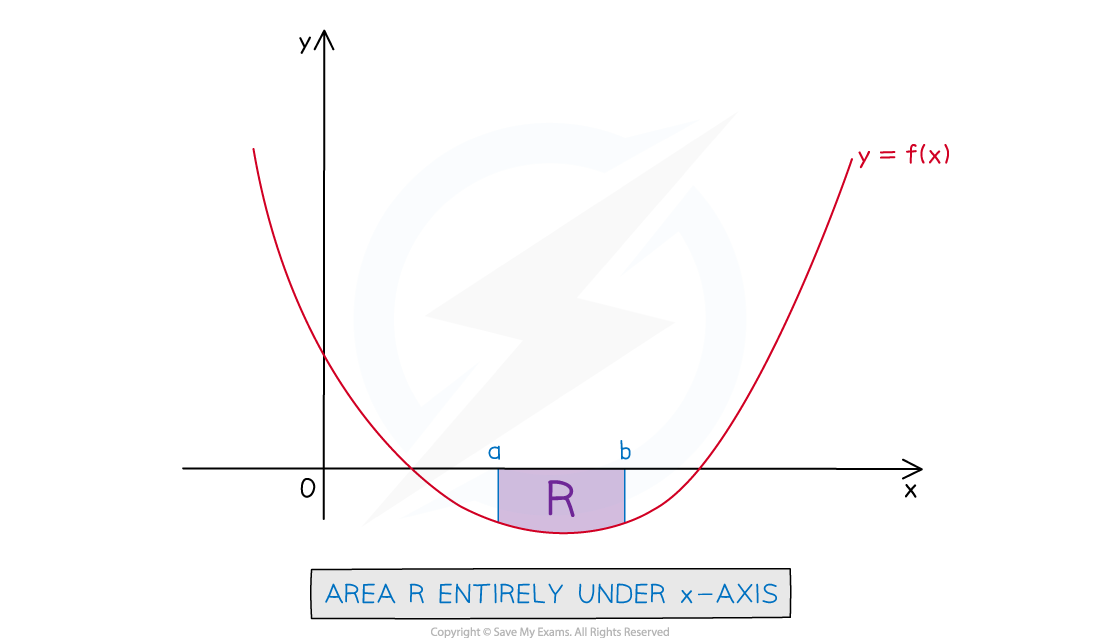
STEP 1
Write the expression for the definite integral to find the area as usual
This may involve finding the lower and upper limits from a graph sketch or GDC and f(x) may need to be rewritten in an integrable form
STEP 2
The answer to the definite integral will be negative
Area must always be positive so take the modulus (absolute value) of it
 How do I find the area under a curve when the curve is partially under the x-axis?
How do I find the area under a curve when the curve is partially under the x-axis?
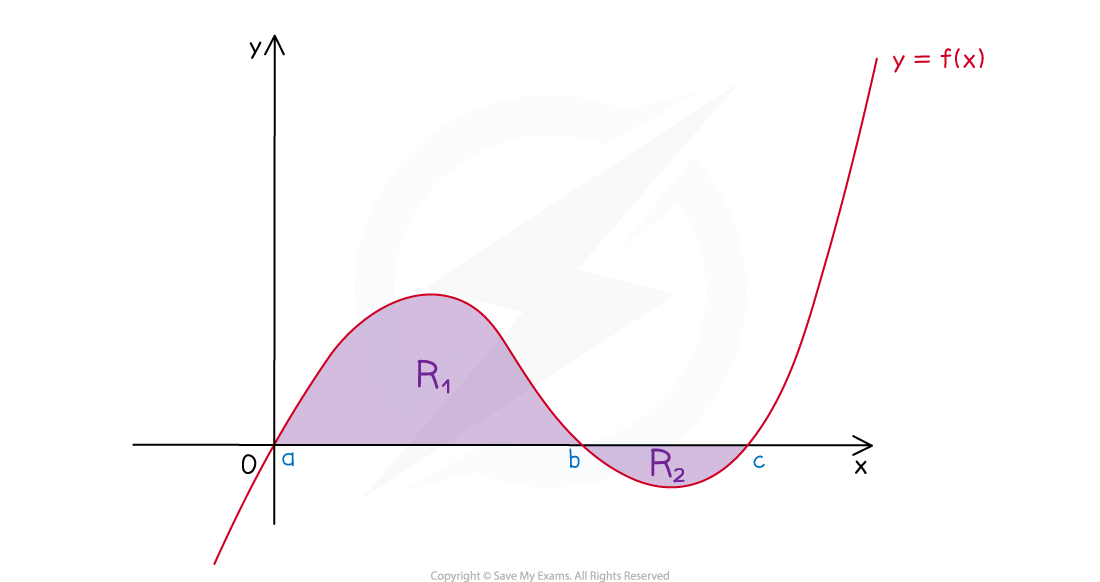
- For questions that allow the use of a GDC you can still use
 To find the area analytically (manually) use the following method
To find the area analytically (manually) use the following method
STEP 1
Split the area into parts - the area(s) that are above the x-axis and the area(s) that are below the x-axis
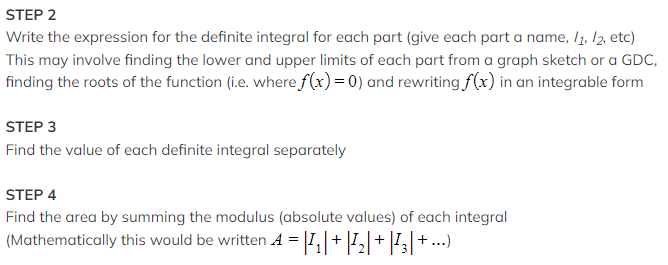 Exam Tip
Exam Tip
- If no diagram is provided, quickly sketch one so that you can see where the curve is above and below the x - axis and split up your integrals accordingly
Worked Example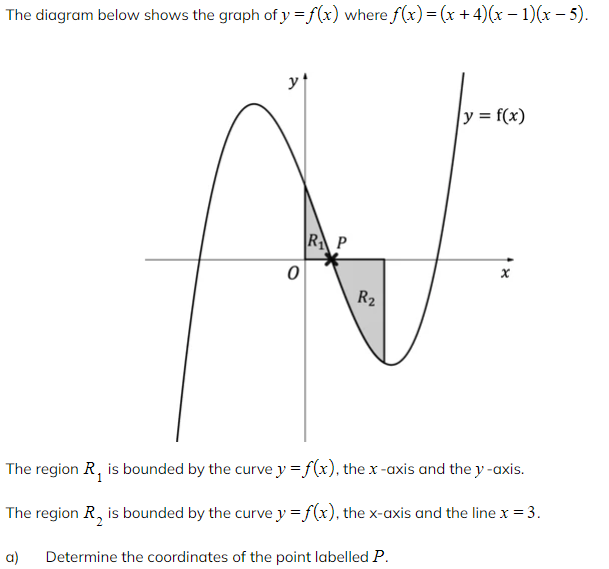


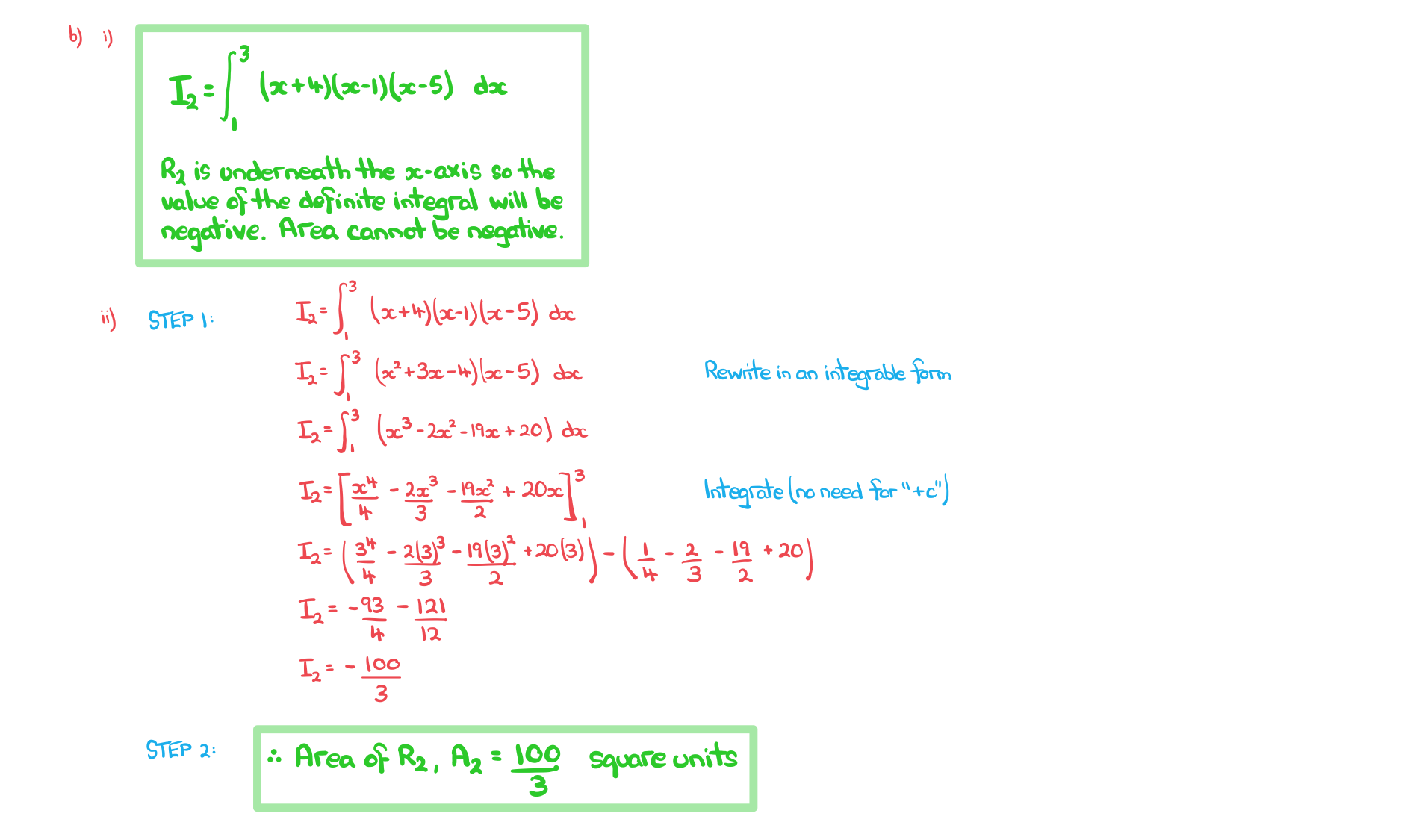
![]()
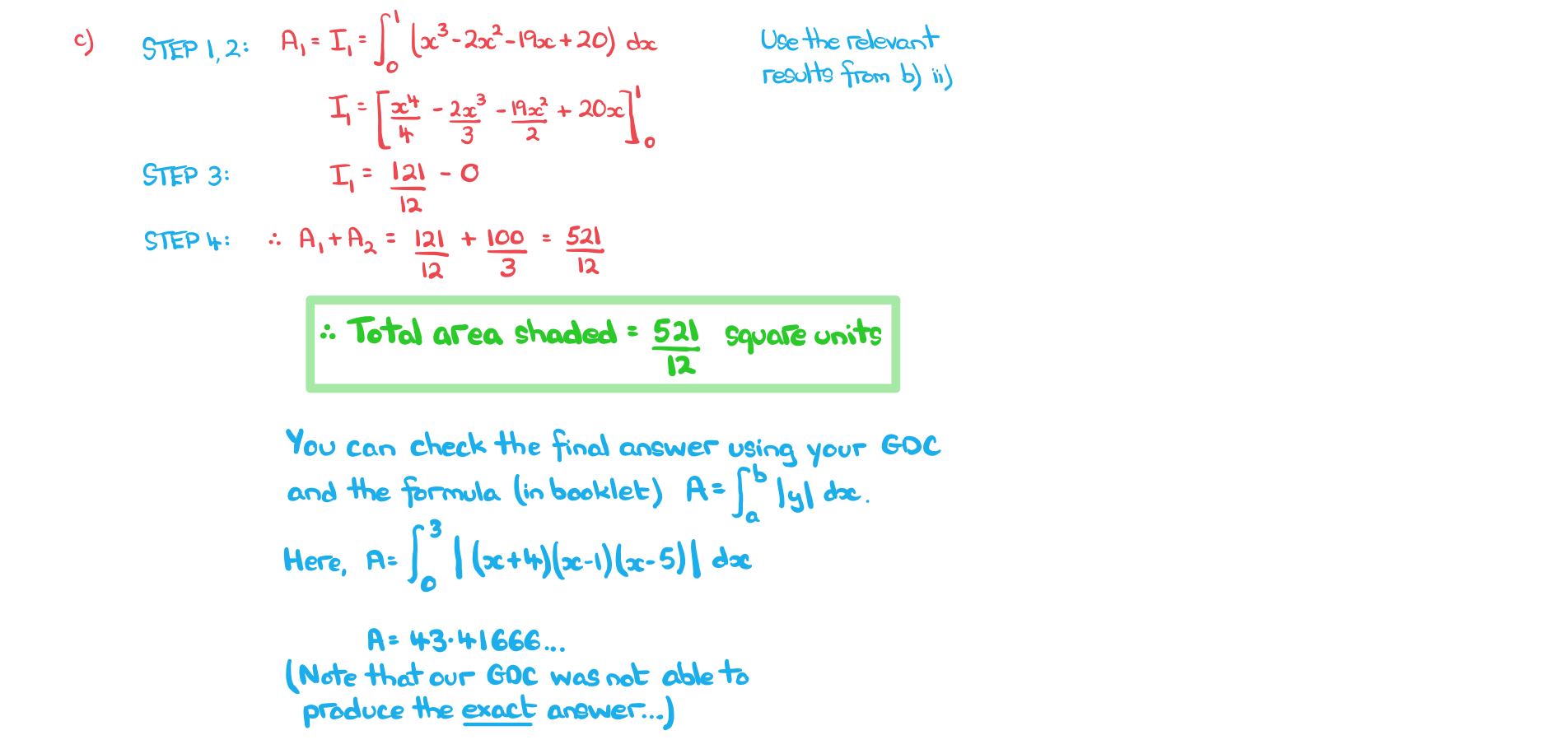
Area Between a Curve and a Line
- Areas whose boundaries include a curve and a (non-vertical) straight line can be found using integration
- For an area under a curve a definite integral will be needed
- For an area under a line the shape formed will be a trapezium or triangle
- basic area formulae can be used rather than a definite integral
- (although a definite integral would still work)
- The area required could be the sum or difference of areas under the curve and line
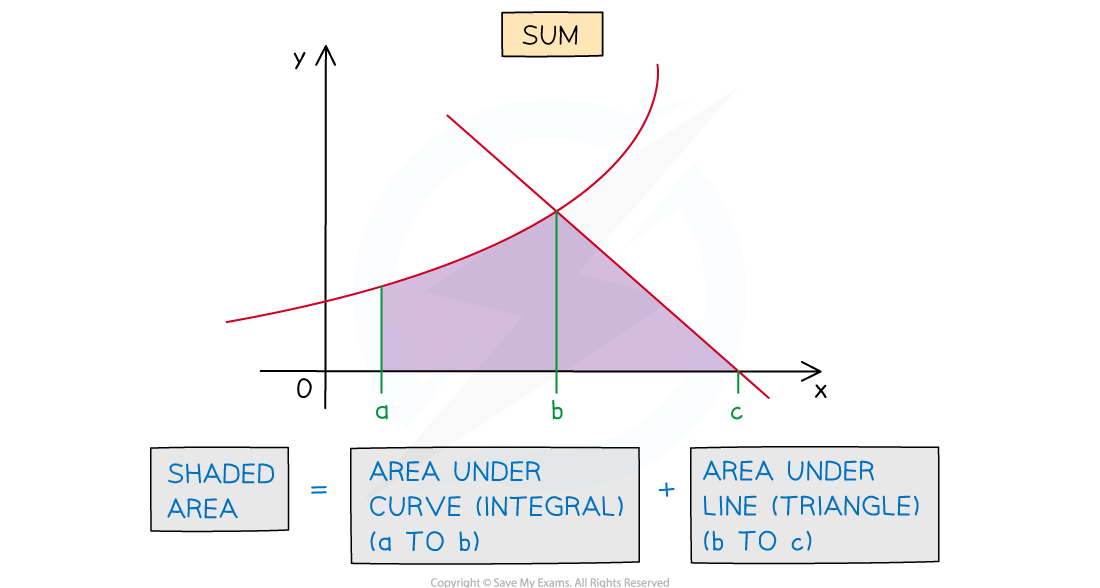

How do I find the area between a curve and a line?
STEP 1
If not given, sketch the graphs of the curve and line on the same diagram
Use a GDC to help with this step
STEP 2
Find the intersections of the curve and the line
If no diagram is given this will help identify the area(s) to be found
STEP 3
Determine whether the area required is the sum or difference of the area under the curve and the area under the line
Calculate the area under a curve using a integral of the form
Calculate the area under a curve using a integral of the form

STEP 4
Evaluate the definite integrals and find their sum or difference as necessary to obtain the area required
Exam Tip
- Add information to any diagram provided
- Add axes intercepts, as well as intercepts between lines and curves
- Mark and shade the area you’re trying to find
- If no diagram is provided, sketch one!
Worked Example



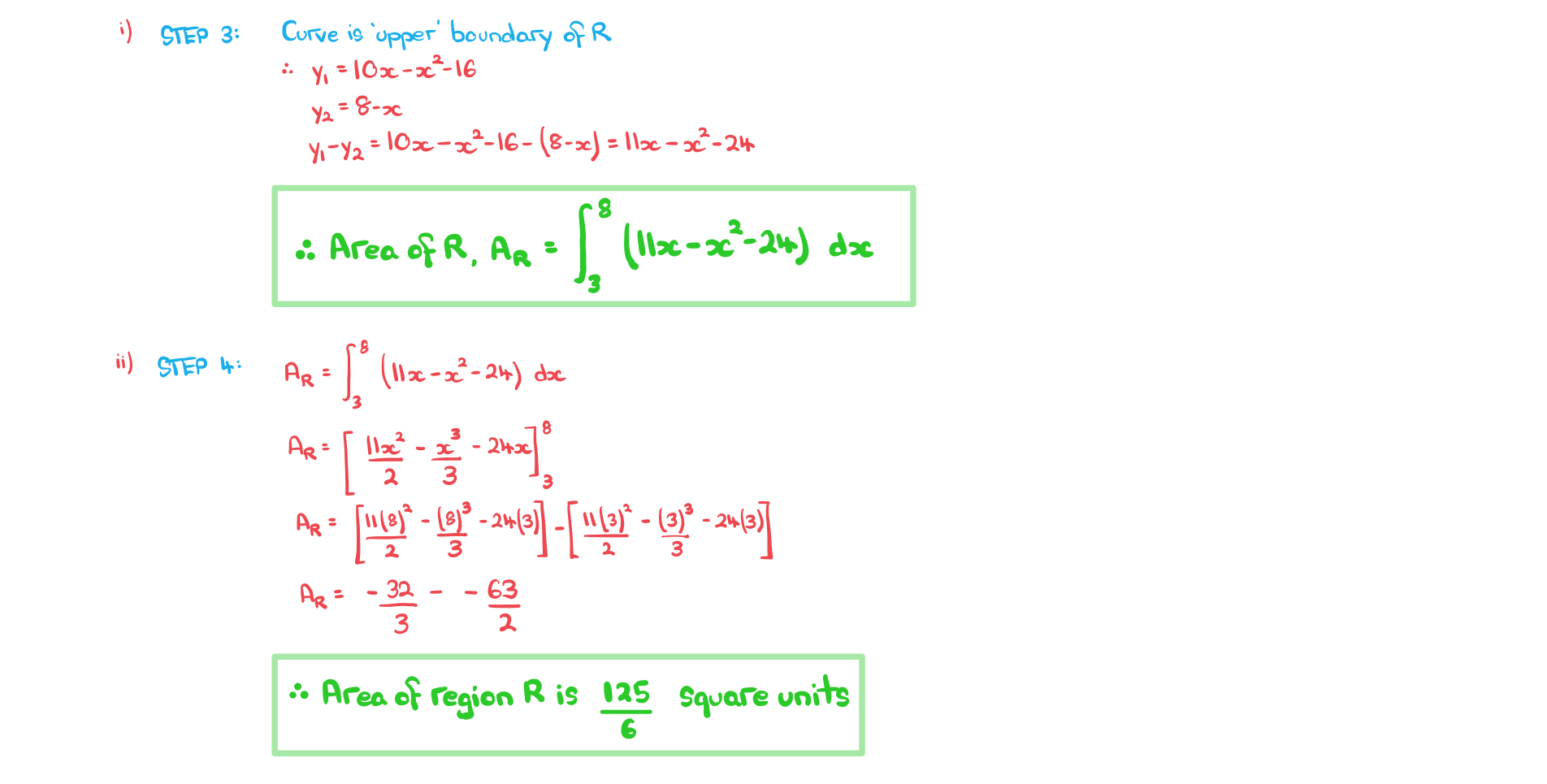
Area Between 2 Curves
- Areas whose boundaries include two curves can be found by integration
- The area between two curves will be the difference of the areas under the two curves
- both areas will require a definite integral
- Finding points of intersection may involve a more awkward equation than solving for a curve and a line
- The area between two curves will be the difference of the areas under the two curves
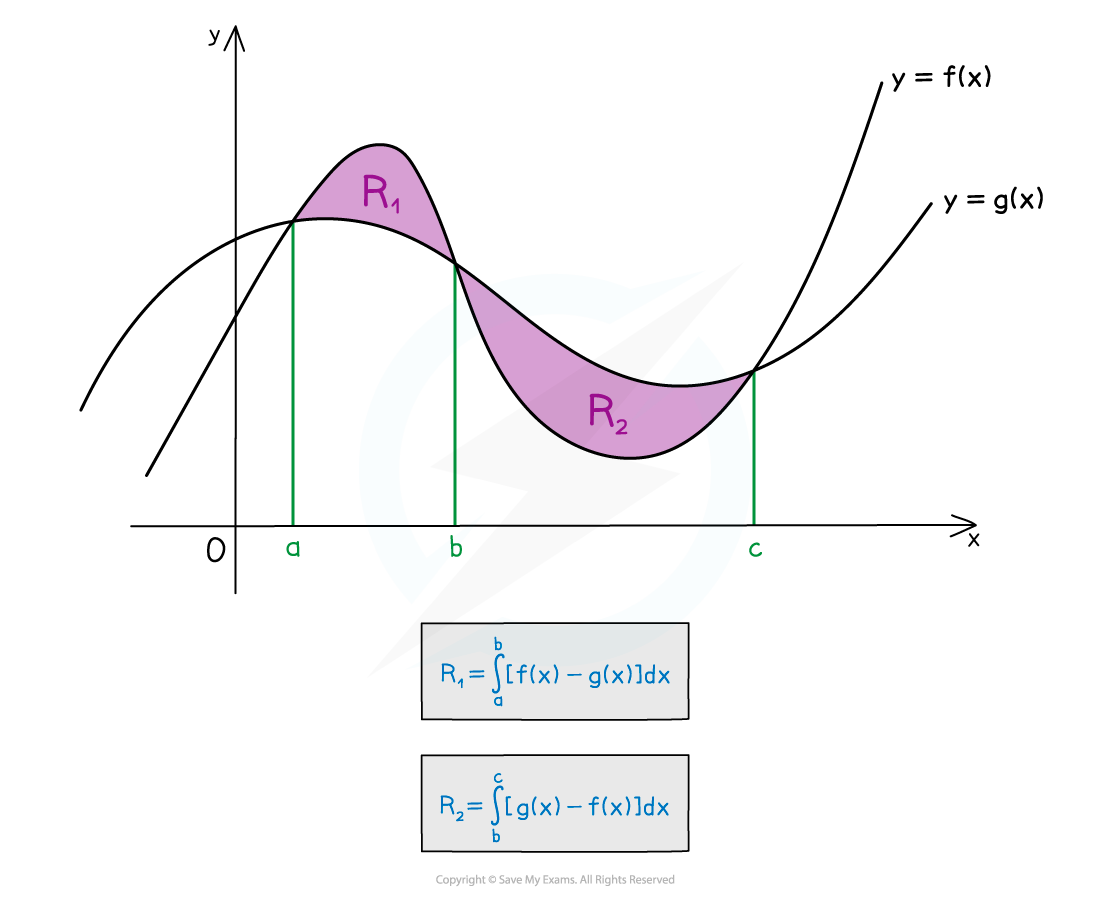
How do I find the area between two curves?
STEP 1
If not given, sketch the graphs of both curves on the same diagram
Use a GDC to help with this step
STEP 2
Find the intersections of the two curves
If no diagram is given this will help identify the area(s) to be found
 STEP 4
STEP 4Evaluate the definite integrals and sum them up to find the total area
(Step 3 means no definite integral will have a negative value)
Exam Tip
- If no diagram is provided sketch one, even if the curves are not accurate
- Add information to any given diagram as you work through a question
- Maximise use of your GDC to save time and maintain accuracy:
- Use it to sketch the graphs and help you visualise the problem
- Use it to find definite integrals
Worked Example
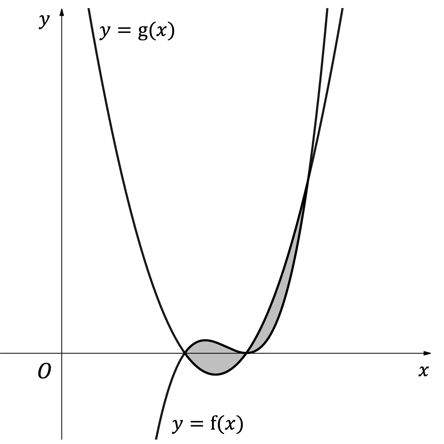
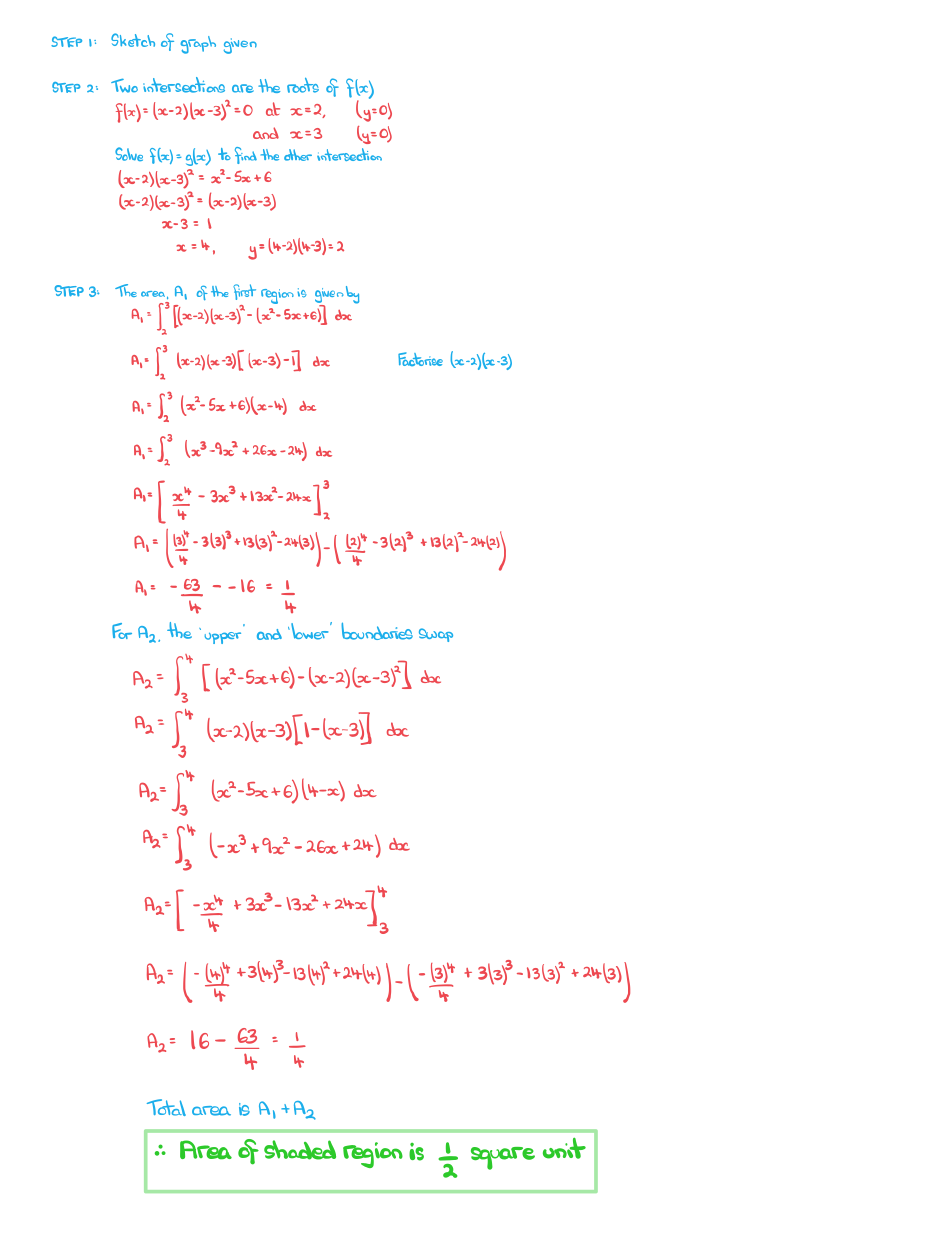
转载自savemyexams

最新发布
© 2025. All Rights Reserved. 沪ICP备2023009024号-1









